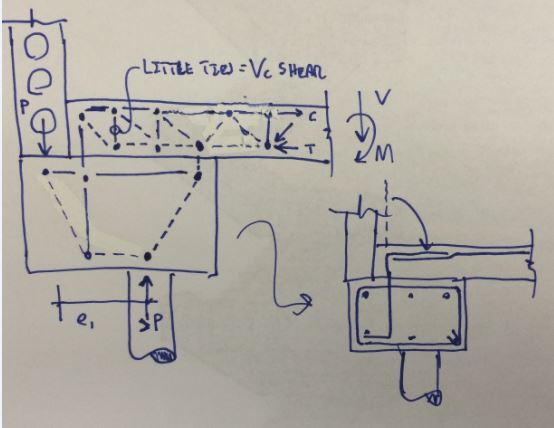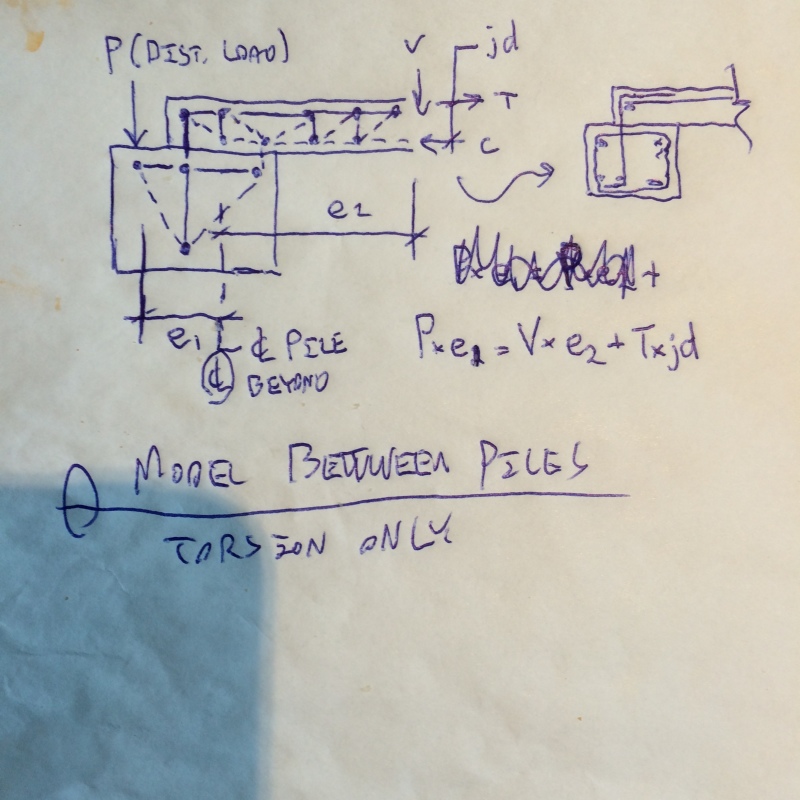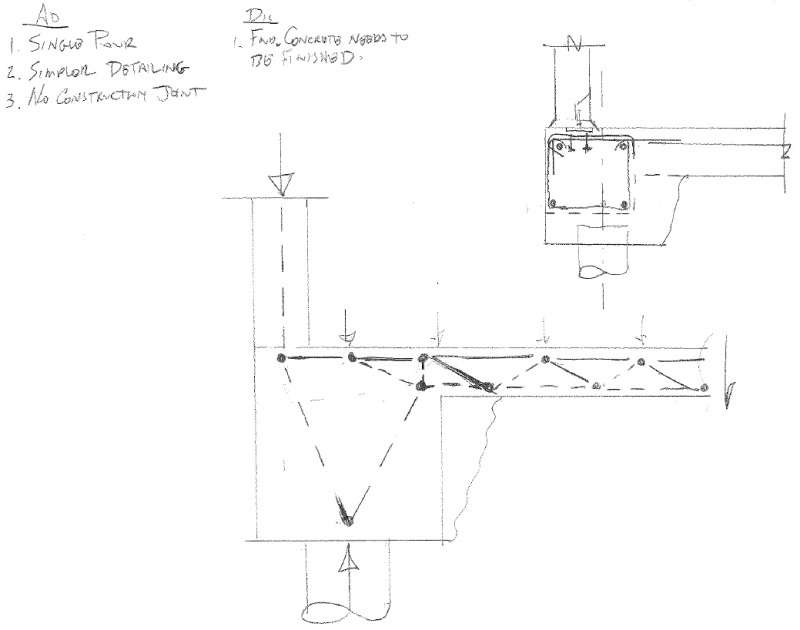4dmodeller
Structural
- Oct 8, 2015
- 39
Hi all,
can someone remind me how to draw and calculate the correct strut and tie model/ (force through the reinforcement bar) to show how the ground floor slab helps take out the eccentricity from precast wall landing eccentric from the supporting capping beam?
i know it works but i just cant seem to recall how to draw one properly.
alternatively, ive justify that if the moment induced in the capping beam is this much, i will create a push and pull free body diagram in the ground floor slab to calculate how much reinforcement i need.
Thanks all!
can someone remind me how to draw and calculate the correct strut and tie model/ (force through the reinforcement bar) to show how the ground floor slab helps take out the eccentricity from precast wall landing eccentric from the supporting capping beam?
i know it works but i just cant seem to recall how to draw one properly.
alternatively, ive justify that if the moment induced in the capping beam is this much, i will create a push and pull free body diagram in the ground floor slab to calculate how much reinforcement i need.
Thanks all!





